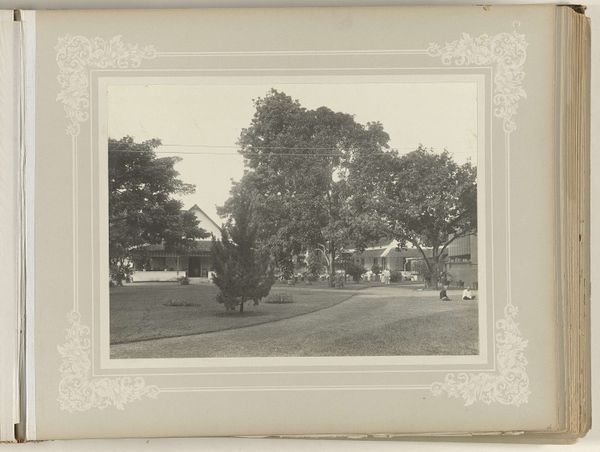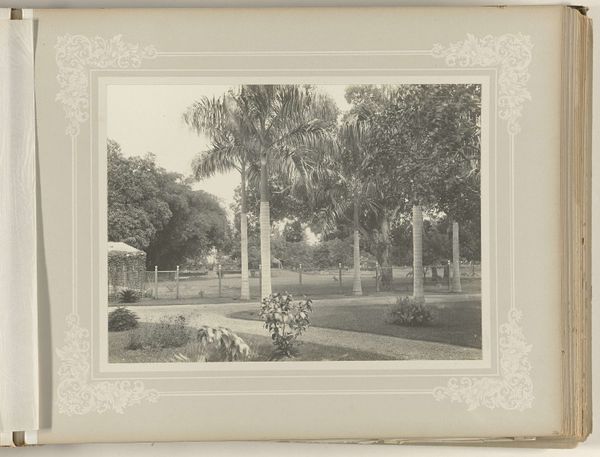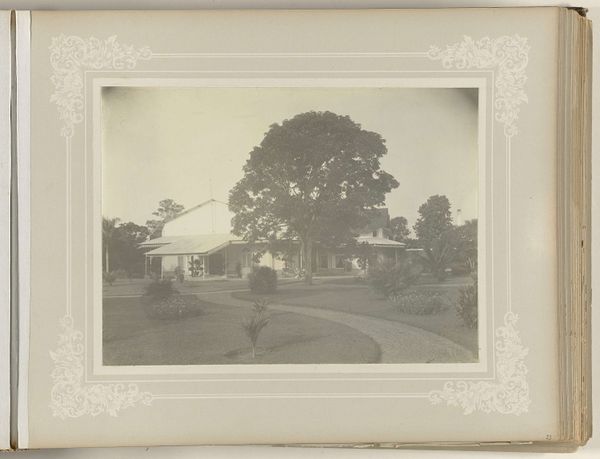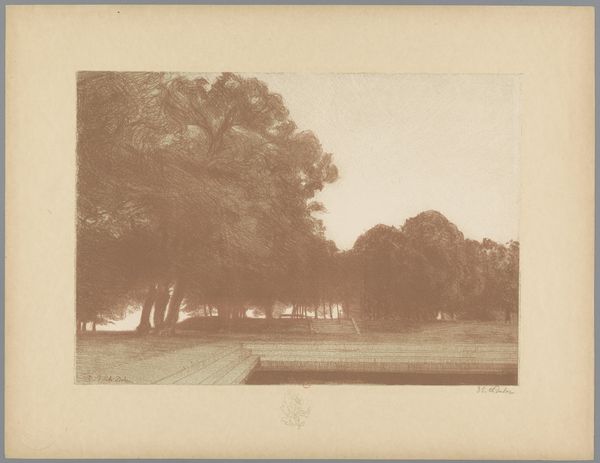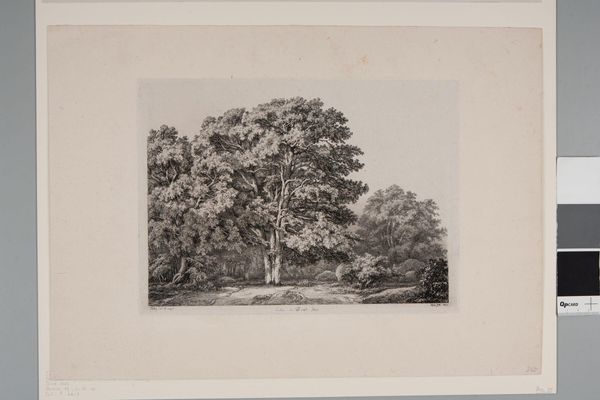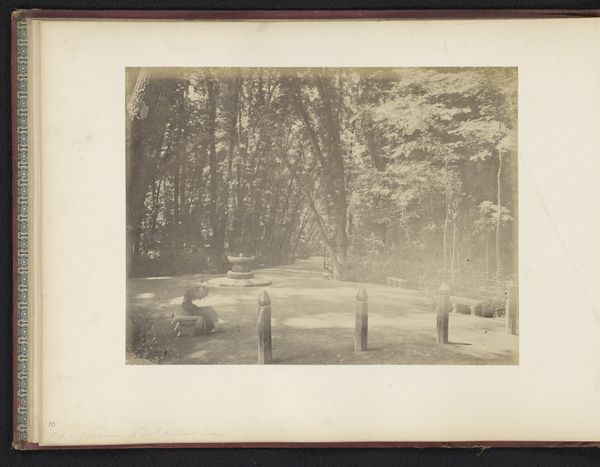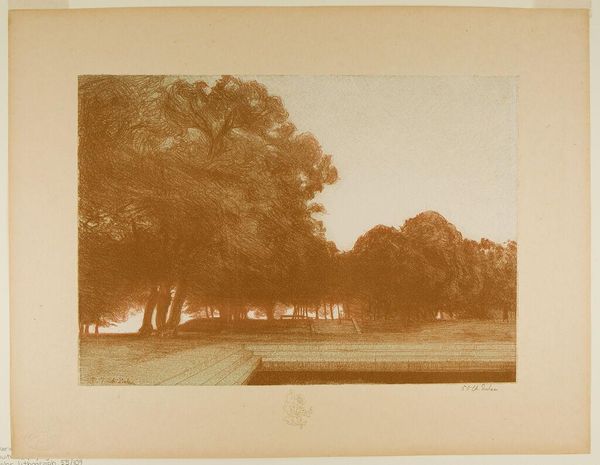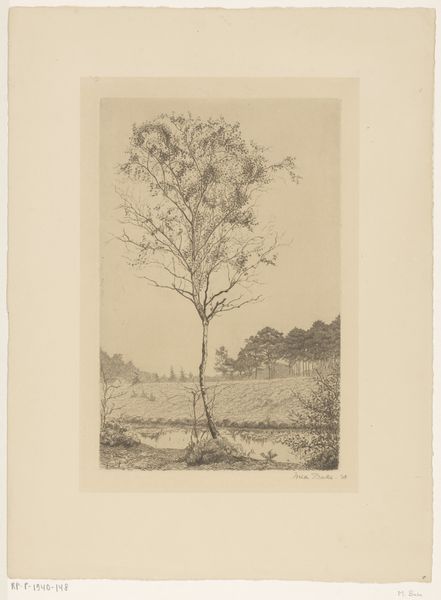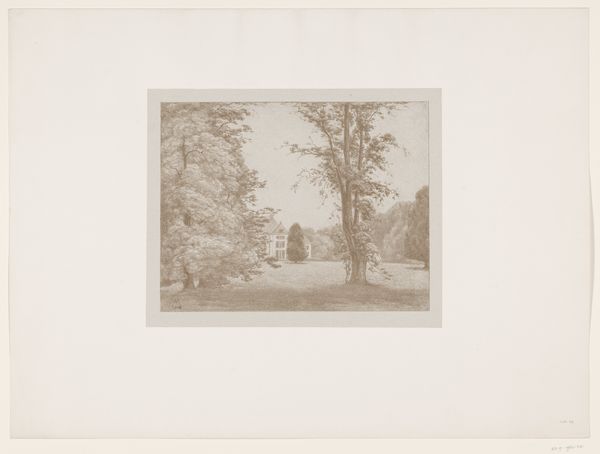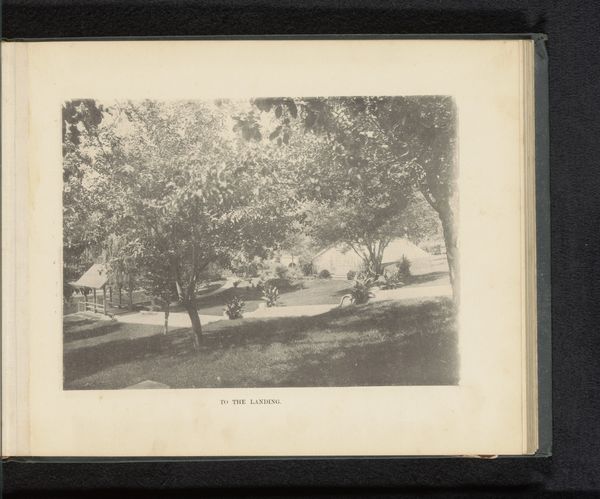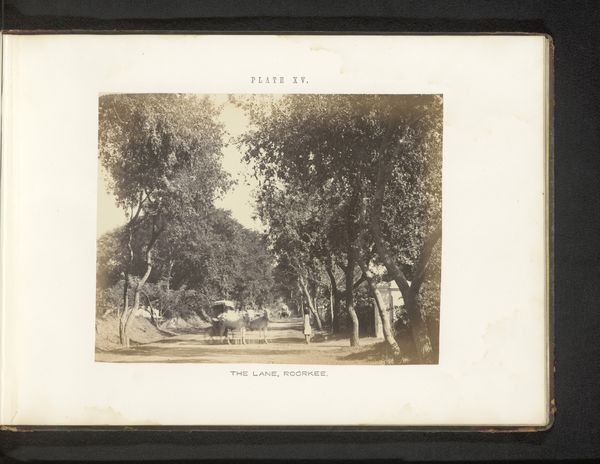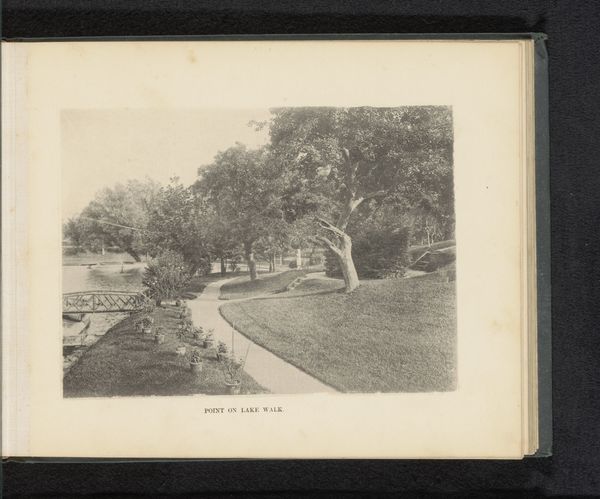
Dimensions: height 230 mm, width 170 mm
Copyright: Rijks Museum: Open Domain
Editor: Here we have Otto Hisgen's "Tuin met bomen," a gelatin-silver print created sometime between 1890 and 1910. It's a quiet scene, almost melancholic with its grayscale and soft focus. It reminds me of Pictorialism. What catches your eye when you look at this image? Curator: It's a really evocative piece, isn't it? Immediately, I think about the rise of public parks during this period. This photograph suggests an idealized vision of nature accessible to everyone. Given Hisgen’s work falls under Pictorialism, how do you think the choice of photography itself, as a medium, interacts with the societal function of this "garden with trees"? Editor: That's an interesting question! Maybe the widespread availability of photography, like these parks, democratized access to artistic representation and idealized nature. The way Hisgen manipulated the photograph—blurring details, evoking painterly effects—makes me wonder if he was also commenting on photography's legitimacy as high art. Curator: Precisely! There was a push to legitimize photography in fine art circles, and photographers like Hisgen used techniques that mimicked painting. Consider how this garden might have been curated. How are idealized visions reflected through the medium’s manipulation? Editor: I guess that makes me look at the perfectly spaced trees in the image differently. This idealized garden isn’t just a product of Hisgen's photographic technique; it also speaks to designed green spaces and access to leisure for a growing urban class. Curator: Exactly. By presenting nature through this carefully framed lens—both literally in the camera and figuratively in terms of artistic movement and landscape architecture—Hisgen engages with how we construct ideas about nature, class, and even leisure through public institutions and visual representation. Editor: I never would have thought of all of those layers when first looking at this peaceful photo! Curator: It's always about considering the broader context. What narratives are being built or reinforced and why? That’s what brings history alive when we consider an image.
Comments
No comments
Be the first to comment and join the conversation on the ultimate creative platform.
